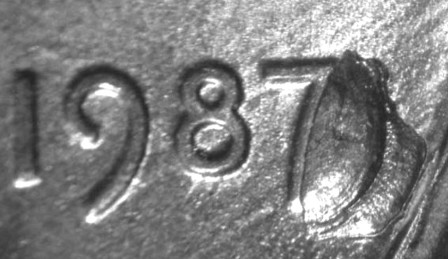PART IV. Die Errors:
Interior Die Breaks:
Freestanding
Definition: It’s a rare event when a die chip is so large that it warrants being designated an interior die break. Interior die breaks should not be confused with “cuds”. By definition, a cud is a die break that includes the rim and at least a little bit of the field.
Interior die breaks have no direct connection to the rim. They may have an indirect connection via a die crack or split die. Since voids left in the die face by natural fractures span an unbroken size continuum, there is no clear boundary between a “die chip” and an “interior die break”.
Any void encompassing an area of 4 square millimeters or more qualifies as an interior die break. Any void that covers less than 1 square millimeter is a die chip. In between is a gray area. Die chips are commonly encountered in all denominations. In Lincoln cents they include “BIE” errors, “plugged” 5’s and 9’s, and “bugs in the wheat ear”.
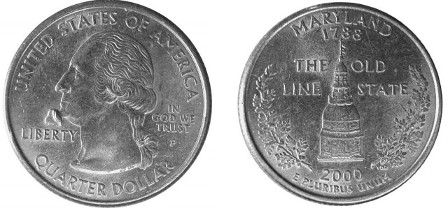
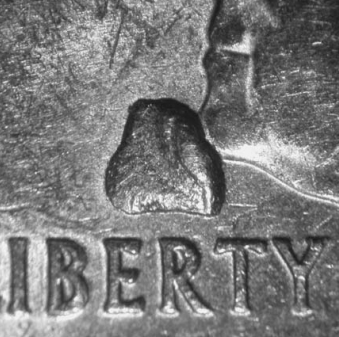
Freestanding interior die break on a 1984-P Roosevelt dime. It is situated between Roosevelt’s neck (a long, straight edge), the date, and the mintmark.
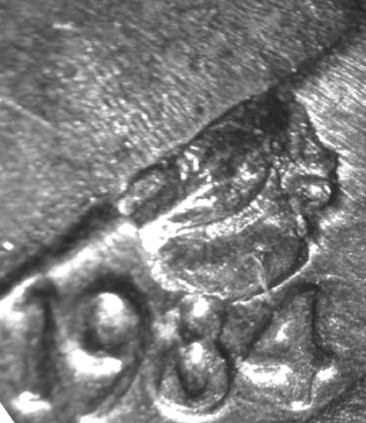
1970-D cent with a freestanding interior die break between the base of the Memorial (another straight edge), the rim, and the “O” of ONE.
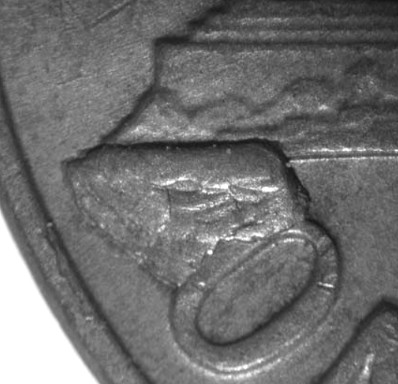
1987 cent with a freestanding interior die break that extends from the side of the “7” (a gently curved edge) and = almost reaches the rim.
